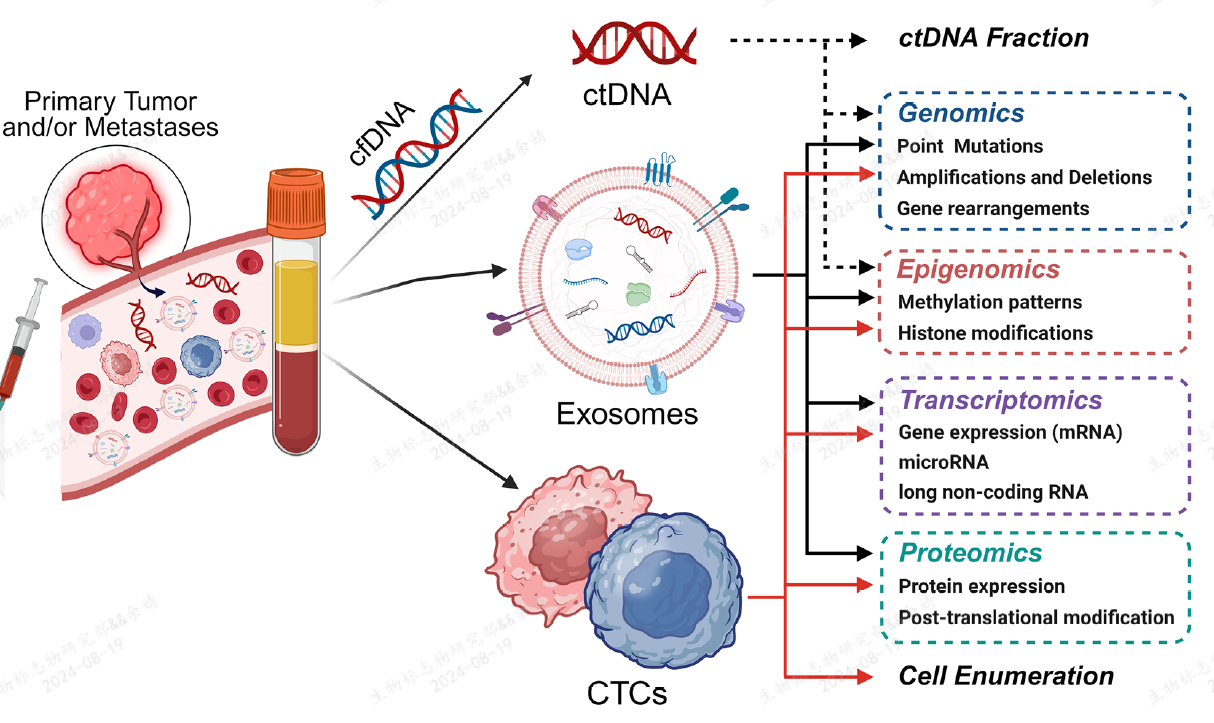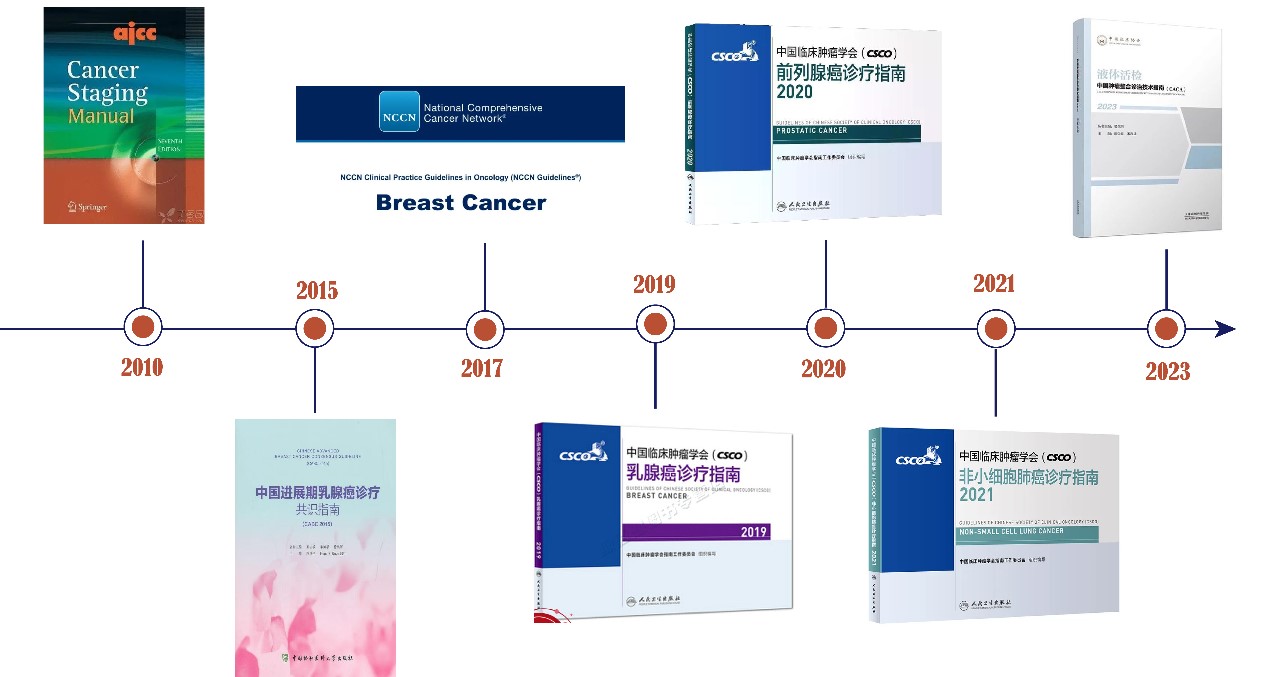肿瘤“吹哨人”——关于循环肿瘤细胞(CTC)的那些事儿

CTC作为液体活检的重要研究对象,包含广泛的肿瘤信息。本专栏将介绍CTC的特性,临床应用,研究手段,最新研究进展等内容。关于CTC的前世今生,您关注的为您一一奉上。
肿瘤的早发现早诊断早治疗是提高肿瘤疗效的关键。在传统临床实践中,获得肿瘤组织只有手术活检和穿刺活检两种,在早期诊断之前进行肿瘤筛查,在肿瘤患者术后进行复发评估,均无法获得组织样本。此外,转移性患者体内存在多个肿瘤病灶,具体从哪个病灶获取肿瘤组织样本也是一大问题。
液体活检和循环肿瘤细胞(CTC)
液体活检针对体液样本进行检测,具有非侵入性、副作用小、操作简单和能重复取样等优点,在临床实践中具有广泛的应用前景。液体活检的检测对象包括CTC(循环肿瘤细胞,circulating tumor cell)、ctDNA(循环肿瘤DNA,circulating tumor DNA)和细胞外囊泡等[1]。
CTC是指从实体瘤中脱离出来并进入外周血液循环的肿瘤细胞,并转运到远端组织,再渗出,适应新的微环境,最终“播种”、“增殖”、“定植”、形成转移灶,是肿瘤转移的“种子”,目前在临床上已有广泛的应用。

CTC的临床应用
早期体外诊断与筛查:
中国临床肿瘤协会(CSCO)与中国胸部肿瘤研究协作组液体活检专家共识:CTC可用于肺癌早期诊断和复发监测的科学研究。CTC可早于影像学提示肿瘤发生,对肿瘤早期筛查具有重要临床价值[2]。
辅助分型分期:
CTC检出率与肿瘤大小(T分期)、淋巴结转移相关[3];多因素生存分析显示CTC检出率与肿瘤大小、淋巴结转移、分子类型一样为独立预后因素[4,5]。因此,在没有临床和影像学具有转移病灶的患者CTC与免疫组织化学或分子检测发现的微转移一样具有预后意义。此外,联合CTC计数和影像学、病理学、血清学特征参数有助于更准确地评估肿瘤状态和疾病进展[6,7]。
个体化治疗方案选择:
CTC能够提供基因组、转录组、蛋白组、表观组和代谢组水平的治疗靶点和抗性机制的大量信息,基于治疗靶标的CTC分型分析有助于提示药物疗效从而指导治疗决策。具体包括: ①捕获CTC后进行PCR测序或者二代测序,可探究用药靶点及耐药靶点,例如ARV7(前列腺癌内分泌治疗)[8]、HER 2/EGFR/KRAS(靶向用药)[9-11]、PD L1(免疫治疗[12,13]等; ②将CTC体外培养,探究药物敏感性及耐药性[14]; ③术后CTC数目大于阈值,建议强化术后辅助化疗[15]。
疗效和疾病进展的实时监测
血液中CTC的数量是一个强有力的预后因素[4,5]。CTC检测通过无创便捷的方式连续检测,比较患者治疗前后血液中CTC类型和数量变化,比传统影像学检查可以更早地判断治疗疗效[2]。美国NCCN指南和中国CSCO指南,以及国内多个专家共识,均认可CTC可以作为乳腺癌、前列腺癌、结直肠癌、小细胞肺癌等肿瘤的独立预后因素。CTC数目越高,提示患者预后较差。CTC能更早的反映患者的疾病状态,判断疾病预后,前瞻性准确预测患者的无进展生存时间(PFS)和总生存时间(OS)[16]。
复发转移监测:
传统的监测手段如影像学检查无法及时发现或预测肿瘤的复发转移。CTC检测可根据需要随时进行, 对CTC的数量水平进行监测,及时发现数量变化,可成为监测肿瘤复发的指标,可早于影像学预警肿瘤的转移和复发风险[17],以便临床医生及早进行干预。

CTC的发展历史
关于CTC的认识,可以追溯到1869年。

随着研究的深入,CTC被广泛写入各癌种的指南和专家共识。

小结:CTC不仅可以做细胞层面的研究,还可以做分子层面的研究;在应用上,CTC不仅是肿瘤早筛的利器,还是实时监控、疗效追踪及个体化治疗的敲门砖。
参考文献:
1, Nikanjam et al., Liquid biopsy: current technology and clinical applications. J Hematol Oncol, 2022 Sep 12;15(1):131.
2, Lawrence et al., Circulating tumour cells for early detection of clinically relevant cancer. Nat Rev Clin Oncol. 2023 Jul;20(7):487-500.
3, Mavroudis et al., Circulating cancer cells. Ann Oncol, 2010 Oct:21 Suppl 7:vii95-100.
4, Ahn et al., Detection of Circulating Tumor Cells and Their Implications as a Biomarker for Diagnosis, Prognostication, and Therapeutic Monitoring in Hepatocellular Carcinoma. Hepatology, 2021 Jan;73(1):422-436.
5, Lin et al., Circulating tumor cells: biology and clinical significance. Signal Transduct Target Ther, 2021 Nov 22;6(1):404.
6, Sundling et al., Circulating Tumor Cells: Overview and Opportunities in Cytology. Adv Anat Pathol, 2019 Jan;26(1):56-63.
7, Chen et al., Prognostic value of circulating tumor cells combined with neutrophil-lymphocyte ratio in patients with hepatocellular carcinoma. World J Gastrointest Oncol, 2024 Feb 15;16(2):372-385.
8, Bastos et al., CTC-derived AR-V7 detection as a prognostic and predictive biomarker in advanced prostate cancer. Expert Rev Mol Diagn, 2018 Feb;18(2):155-163.
9, Müller et al., Prognostic relevance of the HER2 status of circulating tumor cells in metastatic breast cancer patients screened for participation in the DETECT study program. ESMO Open, 2021 Dec;6(6):100299.
10, Magbanua et al., Clinical Significance of Circulating Tumor Cells in Hormone Receptor-positive Metastatic Breast Cancer Patients who Received Letrozole with or Without Bevacizumab, Clin Cancer Res, 2020 Sep 15;26(18):4911-4920.
11, Yen et al., Detection of KRAS oncogene in peripheral blood as a predictor of the response to cetuximab plus chemotherapy in patients with metastatic colorectal cancer. Clin Cancer Res, 2009 Jul 1;15(13):4508-13.
12, Nosaka et al., Programmed Death Ligand 1 Expression in Circulating Tumor Cells as a Predictor and Monitor of Response to Atezolizumab plus Bevacizumab Treatment in Patients with Hepatocellular Carcinoma. Cancers (Basel), 2024 May 6;16(9):1785.
13, Acheampong et al., Evaluation of PD-L1 expression on circulating tumour cells in small-cell lung cancer. Transl Lung Cancer Res. 2022 Mar;11(3):440-451.
14, Wu et al., Correlation between drug sensitivity profiles of circulating tumour cell-derived organoids and clinical treatment response in patients with pancreatic ductal adenocarcinoma. Eur J Cancer, 2022 May:166:208-218.
15, Yu et al., A Prospective Long-Term Follow-Up Study: The Application of Circulating Tumor Cells Analysis to Guide Adjuvant Therapy in Stage II Colorectal Cancer. Ann Surg Oncol, 2023 Dec;30(13):8495-8500.
16, Bootsma et al., Longitudinal Molecular Profiling of Circulating Tumor Cells in Metastatic Renal Cell Carcinoma. J Clin Oncol, 2022 Nov 1;40(31):3633-3641.
17, Sparano et al., Association of Circulating Tumor Cells With Late Recurrence of Estrogen Receptor-Positive Breast Cancer: A Secondary Analysis of a Randomized Clinical Trial, JAMA Onco, 2018 Dec 1;4(12):1700-1706.





